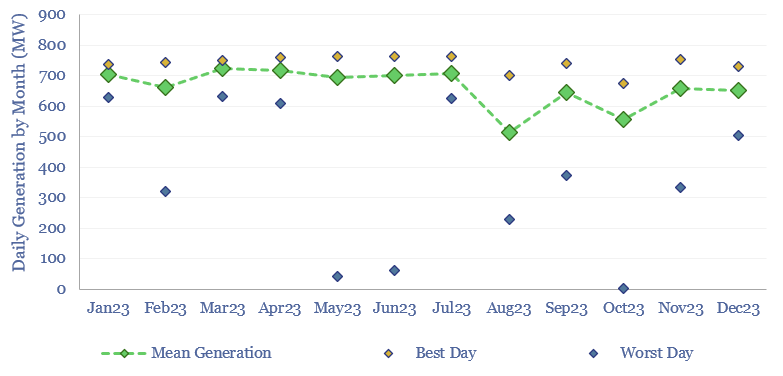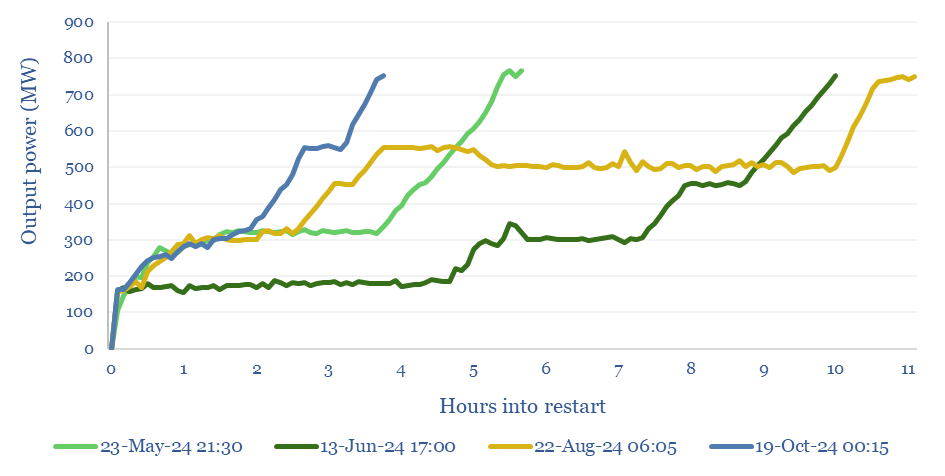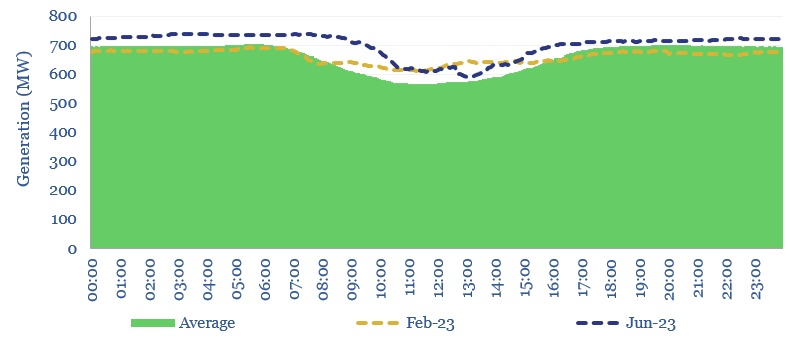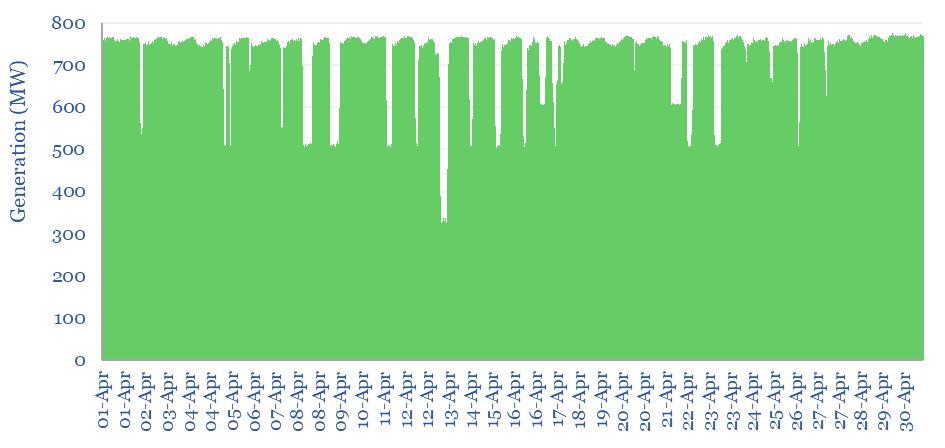Coal power generation is aggregated in this data-file, at the largest single-unit coal power plant in Australia, across five-minute intervals, for the whole of 2023. The Kogan Creek coal plant produces stable baseload power, with an average utilization rate of 85%. But it exhibits lower flexibility to backstop renewables than gas-fired generation.
Kogan Creek is a coal-fired power plant in Brigalow, Queensland, Australia, located 230km west of Brisbane. It has a nameplate capacity of 787MW. It is thus the largest single coal unit in Australia.
The Kogan Creek coal plant uses supercritical steam in its power cycle, working at pressures of 250 bar and temperatures of 560°C, and a total system efficiency of 40%.
As a case study for the flexibility of large-scale coal generation, we have evaluated this coal plant’s output, every 5-minutes over 2023 (105,000 data-points!), using data from AEMO.
Average utilization for the Kogan Creek coal plant in 2023 was 85%, varying remarkably little over the year, as coal provides low-cost baseload to the grid. The plant’s high utilization was mainly hampered by shutdowns, including a two-day outage in October and a five-day outage in August, lowering monthly utilizations to 71% and 66% respectively.

Volatility for a coal plant is low by design. The average 5-minute-by-5-minute volatility of Kogan Creek is +/-1%, while a typical large solar or wind installation is +/- 5%. For wind and solar, this is true volatility. But for coal, it is mostly flexibility, i.e., intentional variation in output levels in response to grid demand and grid pricing.
Several outages occurred at Kogan Creek in 2023, ranging from a couple of hours to several days. Ramping up to full capacity from a cold start appears to take 4-8 hours (chart below). This fits our broader data into power plants’ ramp rates from a cold start.

Solar power has a clear impact on the daily profile of coal generation. Similarly to Stockyard Hill wind farm, output at Kogan Creek was 10-20% lower than average between 8am and 3pm over the whole year. Coal ramps down in the middle of the day to make room for solar but still provides 60% of all electricity produced in Queensland.

This is yet another entry in our series analyzing the generation profiles of different electricity sources using data from the Australian grid. Previously we have looked at gas, solar, wind, and battery storage. Our key conclusion remains that gas-fired generation will entrench as the leading backstop for volatile renewables.
